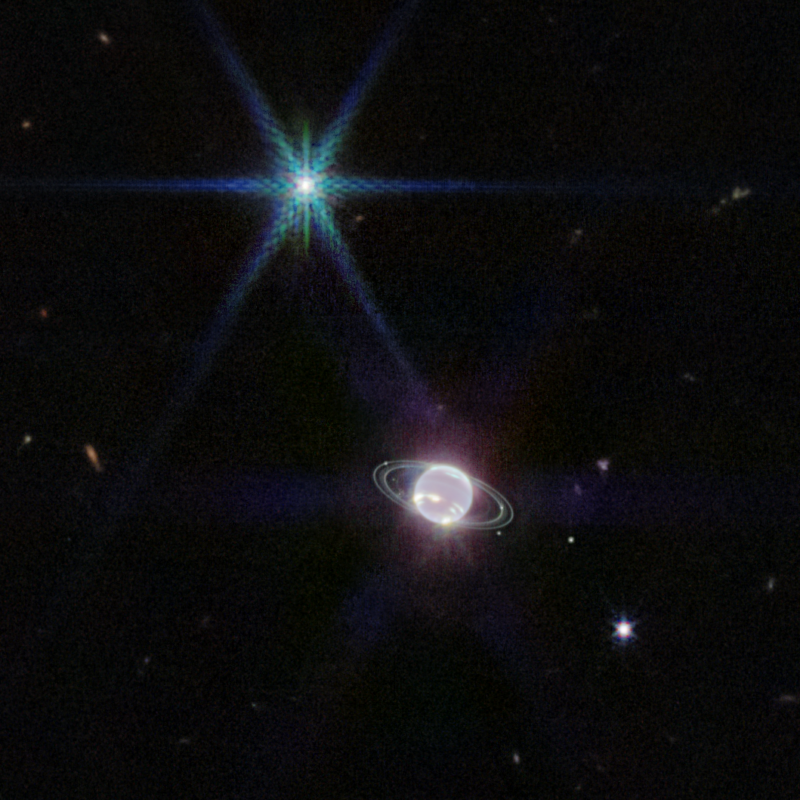New JWST image reveals full glory of Neptune, its moons, and rings

Enlarge / Webb captured seven of Neptune's 14 known moons: Galatea, Naiad, Thalassa, Despina, Proteus, Larissa, and Triton. Neptune's large and unusual moon, Triton, dominates this Webb portrait of Neptune as a very bright point of light sporting diffraction spikes. (credit: NASA, ESA, CSA, STScI)
Scientists are wasting no time in pointing the powerful new James Webb Space Telescope all over the Universe, as well as into our own backyard. Recently, astronomers took data on the eighth planet from the Sun in our Solar System, Neptune. NASA released the first images of this world on Wednesday.
The third-largest planet in our Solar System, Neptune often appears bright blue in images due to the presence of gaseous methane. The Webb telescope, however, observes light in the infrared portion of the spectrum, so its "Near-Infrared Camera" photos show a ghostly white planet. This is because the methane in Neptune's atmosphere absorbs reddish and infrared light.
In the new view of Neptune, the exception to this is the planet's high-altitude methane ice clouds, which reflect sunlight before it can be absorbed by the methane. These appear as brilliant, bright features, NASA says.